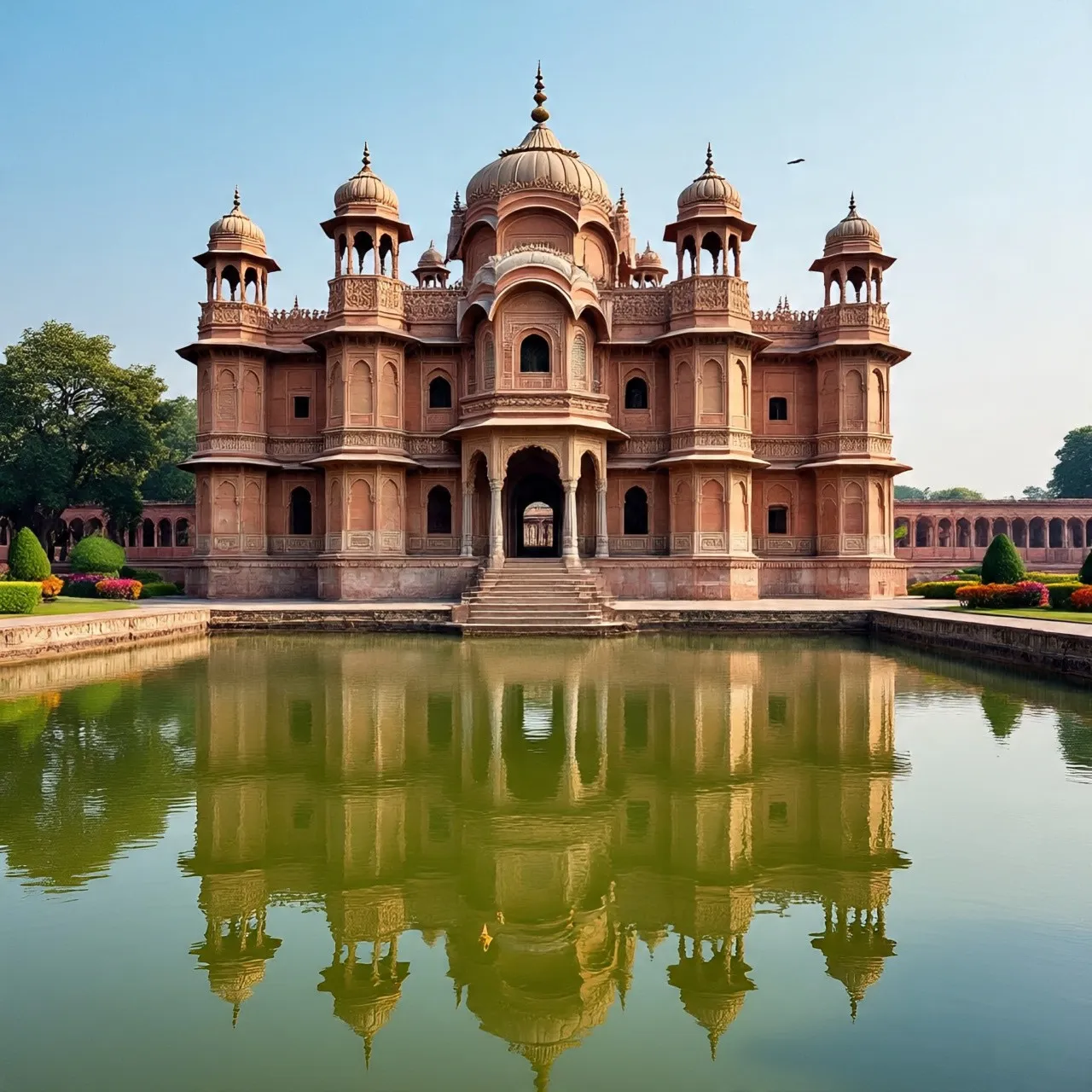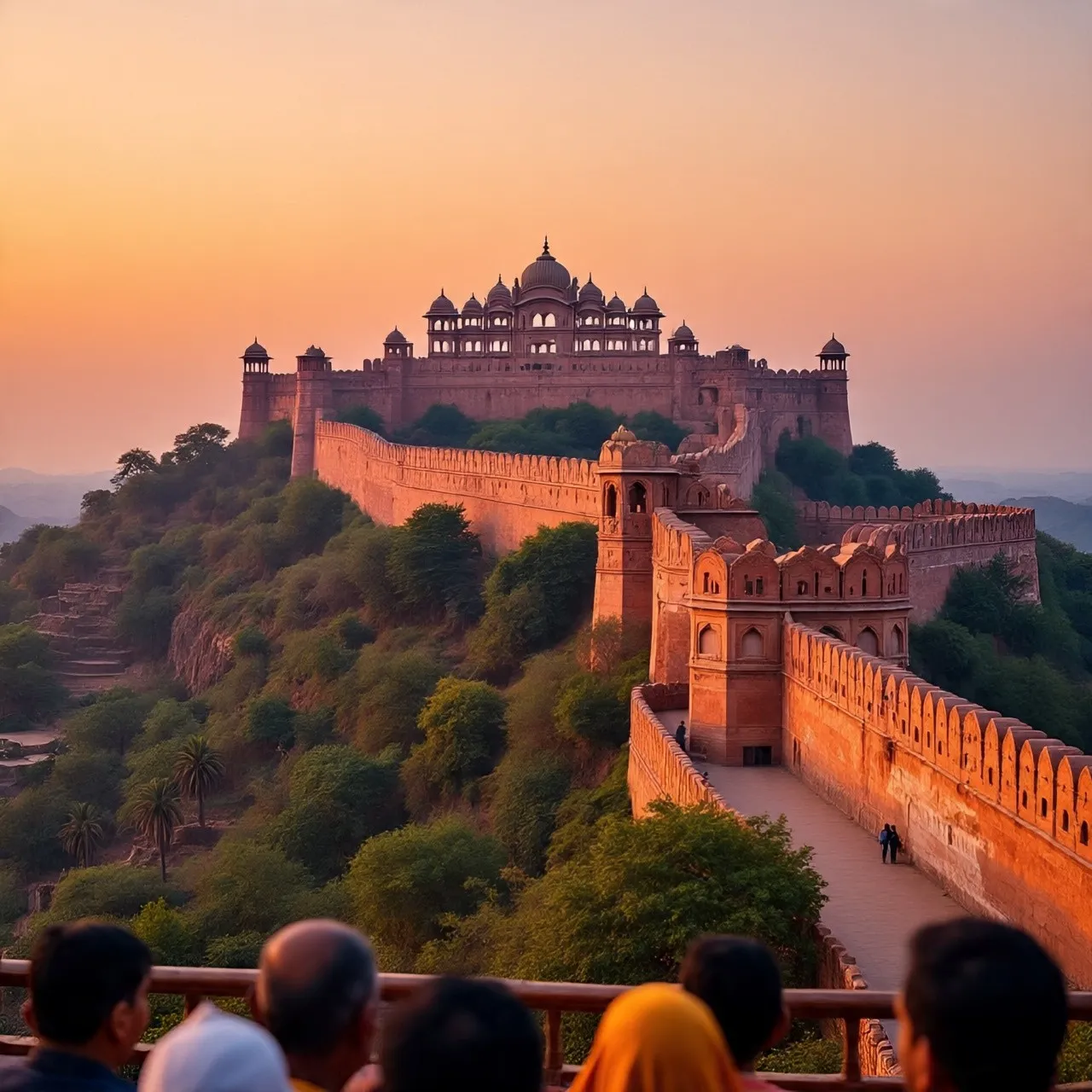🌄 Introduction
Chittorgarh Fort, the largest fort in India, is a symbol of Rajput bravery, valor, and heritage. Built in the 7th century, it served as the capital of the Mewar Kingdom and witnessed legendary battles, heroic sacrifices, and the rise of valiant kings. Every corner of the fort tells stories of courage and royal legacy, making it a must-visit destination for history enthusiasts and travelers alike.
🕰️ History of Chittorgarh Fort
The Chittorgarh Fort was founded by the Mauryan rulers in the 7th century and later became the stronghold of the Sisodia Rajputs of Mewar.
Key Historical Events:
- 1303 AD – Alauddin Khilji siege: Legendary tale of Queen Padmini and Rajput valor.
- 1535 AD – Bahadur Shah attack: Significant battles resulting in heroic sacrifices.
- 1568 AD – Mughal Emperor Akbar: Partial destruction, yet fort remained symbol of pride.
The fort stands as a living monument of Rajput bravery, architecture, and heritage, reflecting centuries of courage and resilience.
🏗️ Architecture of Chittorgarh Fort
Spread across 700 acres on a 180-meter high hill, the fort is enclosed by 13 km of massive walls and seven fortified gates including:
- Padal Pol
- Ganesh Pol
- Hanuman Pol
Inside, the fort houses:
- Palaces: Rana Kumbha Palace, Padmini Palace, Fateh Prakash Palace
- Temples: Meera Temple, Kalika Mata Temple, Kumbha Shyam Temple
- Towers & Gates: Vijay Stambh (Victory Tower), Kirti Stambh (Tower of Fame)
- Water Reservoirs: 84 stepwells ensuring water supply during sieges
The blend of Rajput and medieval architecture makes Chittorgarh Fort a visual marvel.
🏰 Major Attractions Inside the Fort
1️⃣ Vijay Stambh (Victory Tower)
- Built by Rana Kumbha in 1448 AD to commemorate victory over Mahmud Khilji.
- 9 stories tall, adorned with carvings of Hindu deities and legends.
- Panoramic view of the entire fort from the top.
2️⃣ Kirti Stambh (Tower of Fame)
- Dedicated to Jain Tirthankaras.
- Beautifully sculpted white marble tower, symbolizing faith and art.
3️⃣ Padmini Palace
- Legendary residence of Queen Padmini, known for its beauty and strategic design.
- Surrounded by romantic gardens and offering historical insights into Rajput royalty.
4️⃣ Fateh Prakash Palace
- Royal palace converted into a heritage hotel and museum.
- Exhibits paintings, royal costumes, and weapons from the Mewar era.
5️⃣ Kalika Mata Temple
- Ancient temple at the highest point of the fort.
- Believed to have protected the fort during invasions.
6️⃣ Rana Kumbha Palace
- Imposing palace built by Rana Kumbha with intricate balconies, corridors, and courtyards.
- Perfect example of Rajput architectural genius.
🧭 Travel Guide
📍 How to Reach Chittorgarh Fort
- By Air: Maharana Pratap Airport, Udaipur (120 km)
- By Train: Chittorgarh Junction – connected to Jaipur, Udaipur, Delhi
- By Road: NH 27 & NH 58; taxis & buses from Udaipur, Jaipur, and Kota
⏰ Best Time to Visit
- October – March: Pleasant weather for sightseeing
- Avoid summers (April–June) due to extreme heat
🕓 Ideal Duration
- 1–2 days to explore all major gates, palaces, temples, and towers
💸 Approximate Expenses
| Activity | Cost (INR) |
|---|---|
| Fort Entry Fee | ₹50 (Indians) / ₹200 (Foreigners) |
| Local Transport | ₹200 – ₹500/day |
| Accommodation | 1,500 – 3,500/night |
| Food & Misc | 300 – 600/day |
Total Estimated Trip Cost per Person: ₹2,000 – ₹5,000
💡 Visitor Tips
✅ Wear comfortable shoes for walking on steep ramps and uneven surfaces.
✅ Hire a local guide for historical insights and legends.
✅ Visit early morning to avoid crowds and capture photography.
✅ Carry water, sunscreen, and hats during summer months.
✅ Respect local customs and temple areas inside the fort.
🏞️ Nearby Attractions
- Chittorgarh Museum: 5 km – Exhibits of Rajput history and artifacts
- Gaumukh Reservoir: 2 km – Historic water source for the fort
- Bagore Ki Haveli (Optional): 120 km – Udaipur for extended trip
💬 Why Visit Chittorgarh Fort?
Chittorgarh Fort is more than a fort; it’s a symbol of Rajput courage, architecture, and heritage. From towers and palaces to temples and reservoirs, every part narrates a tale of bravery and devotion. For travelers, historians, and photographers, it’s a living museum of Rajasthan’s valor. 🌟


